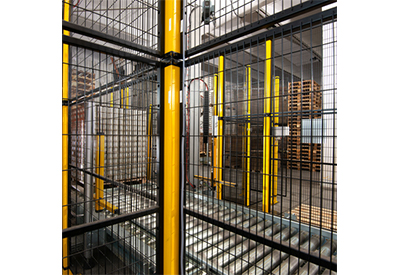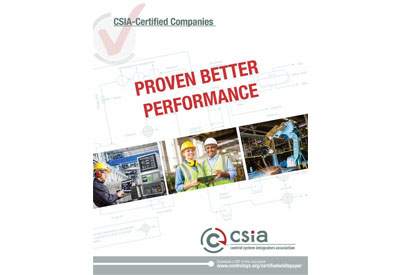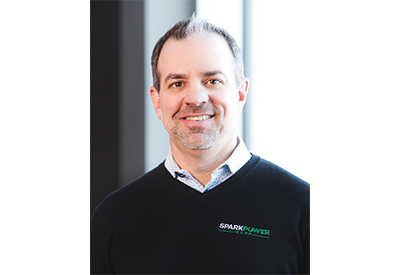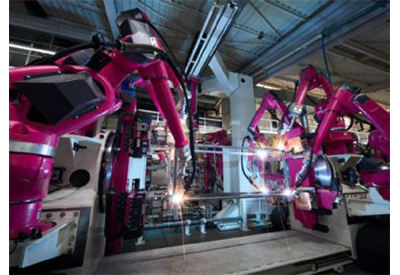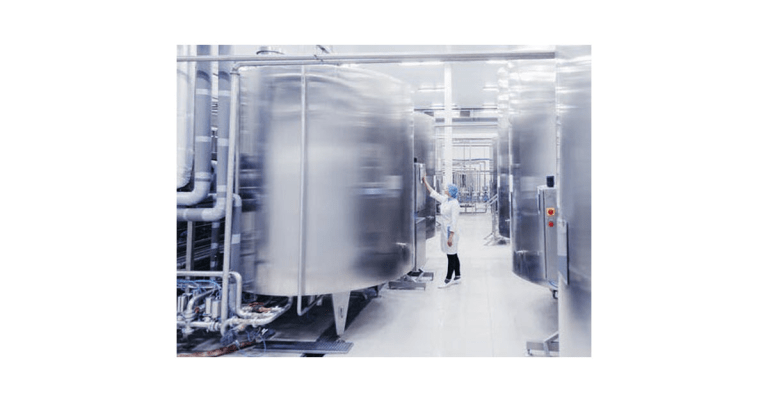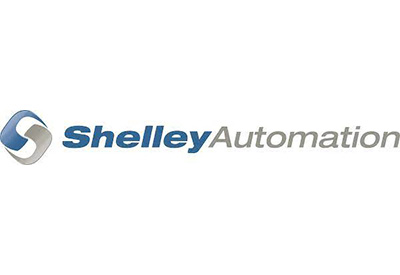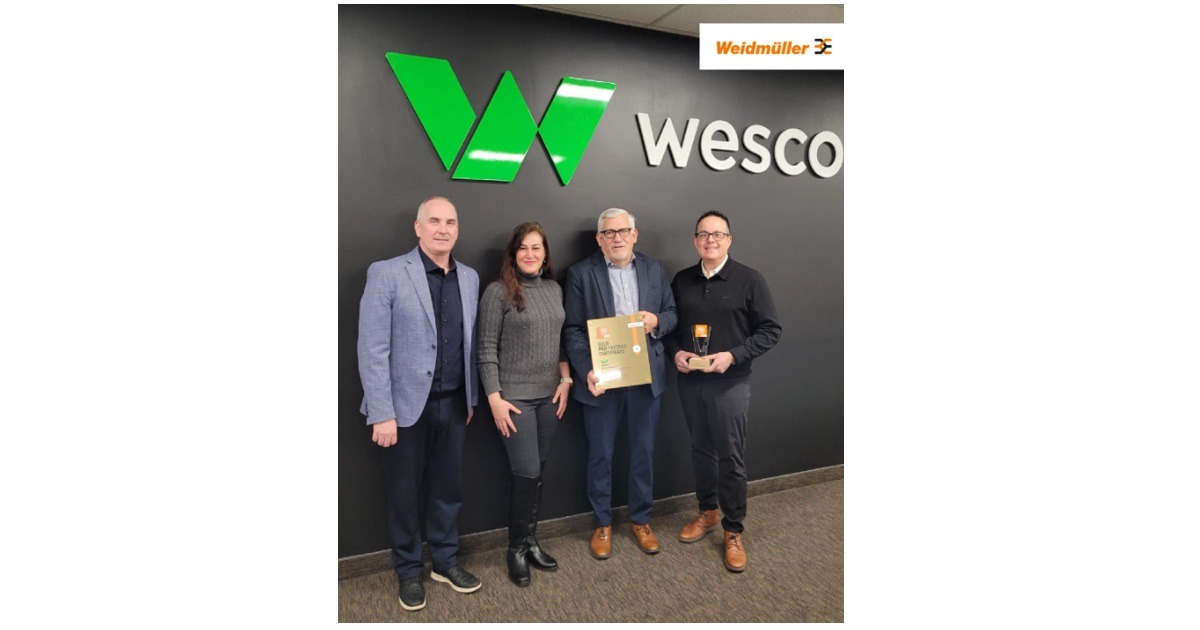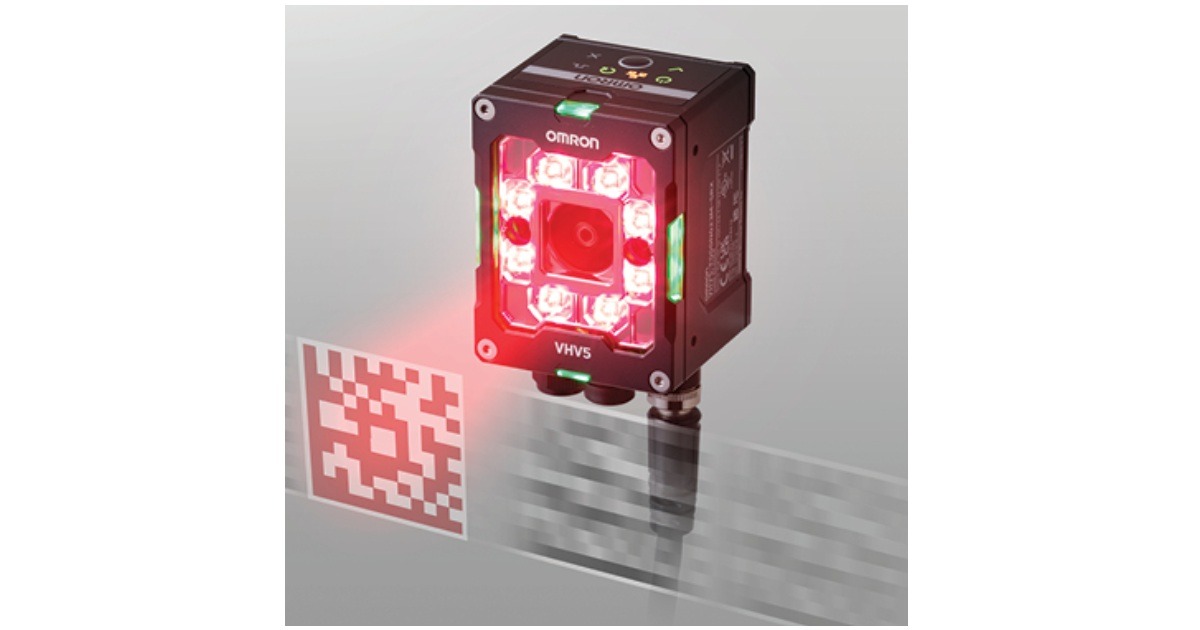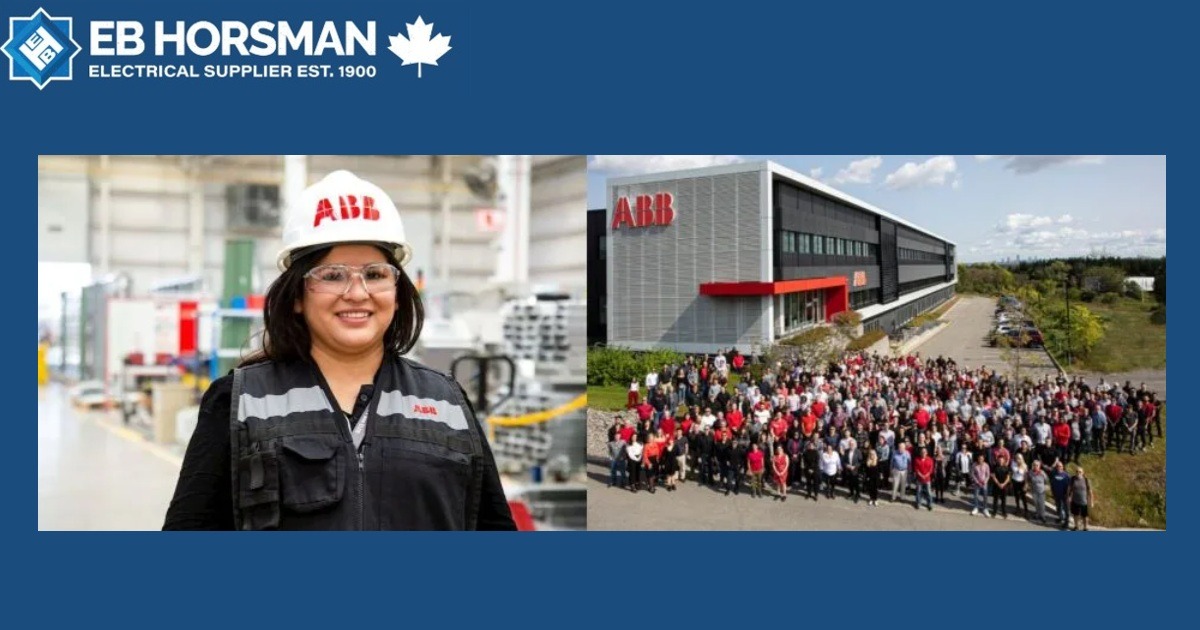Talking Robotics with Kim Povlsen, President of Universal Robots – Continued Growth and a Focus on the Future
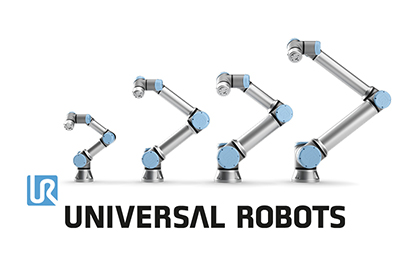
May 10, 2022
By Owen Hurst,
Just before the end of 2021, Panel Builder & Systems Integrator had the opportunity to chat with Kim Povlsen, President of Universal Robots (UR). Kim took over the reins of UR in March 2021 and has continued the legacy from his predecessor Jürgen von Hollen. In 2021 UR continued to expand robotic applications across the globe with their advancing robotics solutions and through a growing focus on educating a young wave of robotics specialists through education initiatives.
In your opinion, what’s been the greatest contributor to the growth of Universal Robots in 2021?
There’s been a couple different things. There are some big trends driving the demand, and then there are some organic things happening as well. Staring with the organic things, I believe that things take time and even though we are just scratching the surface with robotics, I think the awareness of what this technology can do, especially in small and medium-based enterprises is starting to be more broadly accepted.
People know “okay, this is something that could be useful.” That plus, of course there is the labour shortage in the US and everywhere else at the moment. People are deciding to retire, there has been the pandemic, and many younger generations are saying they don’t want to take on that kind of work, loading and unloading machines. There are also many middle-aged workers who, post-pandemic, are saying, “We’re not going back to that job, we’ll go back to work, but not that.” There are many things that have changed the face of labour, and this has significantly accelerated over the last year especially.
The other factor that had significant impact in 2021 is the supply chain. People are waiting longer for things, and this has caused companies to have time to rethink their supply chain situation. People are asking “Where should we get our stuff from? Should we get it more locally?”
This drives a demand, we can call it reshoring or onshoring, and this has generated a kind of demand for sub-providers to start up production more locally. This is a very interesting trend that is happening, and it means that a lot of companies must do high mix, low volume type of production.
How do you do that suddenly? How do you maintain the quality for your current customers at the same level, and how do you change production when you change your mix? For us at Universal Robots, the answer is very often collaborative automation. The micro and macro factors don’t seem to be going to slow down any time soon and that’s driving a huge amount of automation, everywhere.
Have there been any application focuses or any industry segments that have not yet been a focus for robotic and cobot applications, but are something that you see a migration towards?
I think there are two answers to this because there are two aspects that need to be considered when discussing applications.
There is the question, “Do we consider providing more full applications to our customers, because that might lower the barrier of accessing the automation?” And then there is the question, “Which applications are really moving fast?”
When you talk about SMEs (Small-Medium Enterprises), which by the way are the primary focus of UR, they do not often have the skills, the money, the time, or expertise to find and implement complex robotic integrations. It is evident they could use the help, but they don’t have the time to figure it out, so it is kind of a catch 22.
Our job is to make it as seamless and frictionless as possible for them to get into automation. Here application is a key component. They don’t need just another cobot; they need an application solution. They are looking to do screwdriving or dispensing or machine tending, or something else. That is what they really need. To support them UR has an extensive network of technology partners that develop software, components and application kits that we certify to seamlessly integrate with our cobots.
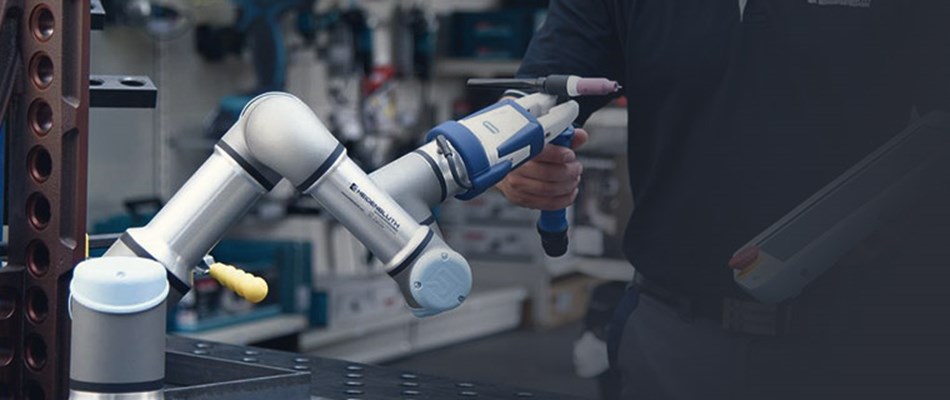
This expansive ecosystem has enabled us to move from providing only the cobot arm to providing full end-to-end solutions. You cannot do 100% solutions; it is important to keep this in mind. You can maybe do 80 or 90% solution or application, but there is always a little bit of customization at the end. If you can get 80 to 90% of the way there, then it becomes manageable to do the automation. So that’s something we’re doing significantly and it’s not a secret. You haven’t seen that much of it yet, but you will soon, and it’s been a huge focus of ours for a while and it will remove a lot of friction for SMEs who are looking at getting into automation.
Notably, there are a few pockets where it’s happening already, with our certified system integrators, and OEM partners. And there are a few interesting applications that I want to highlight because they are the ones that have been growing the fastest over the last year.
The number one is welding. We see that big time. We see OEMs take our cobot, and with our ecosystem they can integrate whatever they want because everything is open API. They are developing an 80-90% complete welding solution they can provide to their customers. Suddenly, welding with robots becomes something anybody can do. A few years ago, most people would not have thought of cobots and welding in the same sentence.
Now it’s everywhere, not just in the US but world-wide, these things are popping up. Another one that is really taking off is screwdriving. Using the latest technology of the cobot, you can do very precise things around screwdriving in a very smart way. This is a way that people working with screwdriving today can have a different kind of job. We see a lot of our customers becoming local operators instead of what they used to do, which is a really cool step forward.
The user-friendly platform model from UR has helped to advance that technology and allowed more adoptions simply because it is a user-friendly model. Do you think that the model is a part of the driving force behind the rate of robotic adoption?
Yes. Absolutely. With more than 300 UR+ partners, imagine how many engineers and combined years of experience working on smart solutions are available to help our customers. So, when a customer or integrator needs to solve an automation problem, knowing there are all these opportunities and components that will work and be compatible with the UR cobot solution in a simple way, that there is assistance and all the software and hardware needed to build the application, that is a big driver and makes a difference.
Whatever you need to do, we can find what you need. I firmly believe that this is playing a big part of the growth we are seeing and is also one of the things we are really invested in for the future. That’s how we want to work with collaborative automation. We are a growing platform with more partners who want to benefit from this community. That is something we will keep working on with a lot of focus.
Talking about collaborative automation and some of the challenges and distribution, do you see this kind of technology being able to support and maybe even solve some of the distribution issues we are seeing today? I think in some places we are starting to see some adoption into these areas in terms of picking and things in warehouses, do you see that sort of technology with cobot applications and collaborative automation being at least a potential solution to some of the distribution issues we are seeing?
I think this is part of the solution I think it takes a lot of things because there are a lot of challenges obviously. But if you take out pieces of the challenge you start to chip away at it. One is the warehouse challenge, where you have a challenge to find labour. So how do you solve that? There’s collaborative automation in general. We make robot arms, but we have some colleagues close to use who are making autonomous mobile robots (AMRs). Sometimes one plus one equals three. And with reshoring happening, we need to produce things locally and maintain the quality that people are used to. The world is not in the position where people are willing to compromise expectations on that quality, and they shouldn’t have to. There are companies abroad which are making and delivering high quality parts in exceptionally high volumes. But this is something you still need to do locally, and the cost still needs to be somewhat comparable, and I think one of the things that can be done to make this happen is automation. In the long-term, things might get back to normal, but I think going forward a lot of companies are always going to have in their minds, “What if?” If we can do things more locally, it isn’t a bad thing if you think about it. We don’t need to ship things across the world, and this means we can think in terms of sustainability too. There’s a lot we can do if we do things more locally if it is possible. If we can maintain that quality and do it at a cost that makes sense. I think we have a big role to play there.
Is feedback from your distributors, Certified Systems Integrators and OEMs also driving your R&D and your understanding of technologies needed to support specific applications?
Yes, but to clarify, it’s a primary channel system market. It’s our integrators and distributors – we have hundreds of these today in 60 countries – that are huge part of our market reach and understanding. But before considering the feedback it is important to consider a bit about the history of UR and how it has affected the feedback loop. We have been a startup for many years but are now reaching a sort of status or scale that is new for us. In the beginning of the journey of UR, it was about getting as many distribution partners as fast as possible. Now our approach is really taking a further step with our sales channel to turn them into partnerships. More than distributors, we want to stand closer to them and really understand what their challenges are, and the other way around too. This is great for them and great for us.
And I want to say, also, that there is an opportunity for them to provide feedback. The distributors, and especially the integrators, they meet customers face-to-face, they’re with them, they understand the challenges they have. They have an exceptional knowledgebase about the challenges of the customers, and we would be foolish if we didn’t listen to them. We talk to a lot of customers directly as well, and get to see them, but this is another channel of information.
And at the end of the day, we are here to solve customer problems. Simple as that. And these guys know a lot.
UR has a focus on supporting youth and the future workforce. What are the goals and advantages to UR by supporting the types of learning opportunities that have been introduced, like the one in Ohio?
Our vision is to create a future where people work with robots and not like robots. It’s important for us to do everything we can to prepare the world to what the future might look like, and we think that it will be very different from today. We take enormous pride in educating others and we have award-winning academy training. Now both in person and a fully virtual simulation version that we developed during the pandemic. We have a 3D world with real robotics, and you are programming just as if you were next to the robot, and it acts exactly just like it does in real life. You learn these kinds of things.
At the same time, we want to do our duty with respect to schooling. How can we teach the next generation to do this? We learned from our approach to education in Europe, and now we’re going to do it much more broadly in North America because we see it was so well received and it is making a difference. In the U.S., Ohio Department of Education just became the first state to evaluate and add UR courses to its Industry-Recognized Credential List, which is something we expect to cascade out to other states in 2022.
It’s something we are proud of. It is so important for schools to get this kind of recognition from governments and other agencies in order to secure funding to get robotics programs into the classroom.
Having large manufacturers vouch for the program and say, “Hey, we need graduates that know this technology because we want to employ them on that particular piece of technology.” That’s been powerful in making this push, and it really is a critical level for UR to have reached with the cobots in the education industry.
UR had a great 2021. What do you see on the horizon for UR in 2022?”
We are very excited about 2022. From a growth perspective, we have a lot to expect, and what we’ve done so far will continue. Every day we see all the new innovations that we have created at Universal Robots. Because things are going so well, we can hire a lot of talent into the company, which means we can deliver more cool things to the world.
Innovations that we will bring to the market next year are going to be really exciting. We will be starting things off in the US, that much I can say. On top of that, I am excited about some new things we are putting in place, and in North America we have decided to take responsibility of the customer’s entire journey of using collaborative robotics, and this is something that is essentially new.
We are going to do this with our partners, so every customer who buys a cobot will have a new program called Customer Care, and we are going to follow up to make sure everything went well. Sometimes customers are struggling, and we want to make sure they have a good experience, that things are working to the level they are expecting, and if not, we are going to take great strides to make sure that it is.
We want to ensure that our customers are successful in their automation journey. This is something we are really excited about that we are starting just now and will be a big deal in 2022 in North America.
In wrapping up our discussion with Kim we asked him if there were any particular topics we should go deeper on, or if we missed anything important for 2022 in our questions. Kim noted that we touched upon the shift from seeing a cobot as simply a tending machine performing simple tasks like pick and place to essentially being the process tool itself.
UR feels that this is a shift and a really important one, especially for application-focused areas that are seeing a surge at the moment. It is important for people to begin thinking of that cobot in regard to actually doing the work and not just placing a part in or on a machine. This shift from simple tasks to complete process is one of the areas where UR is going to recognize a lot of its growth.
2022 is certainly going to be an exciting year for UR and for automation markets that are enhancing their use of collaborative automation. We eagerly look forward to the new technologies and solutions throughout the coming year.
Learn about Universal Robots HERE

